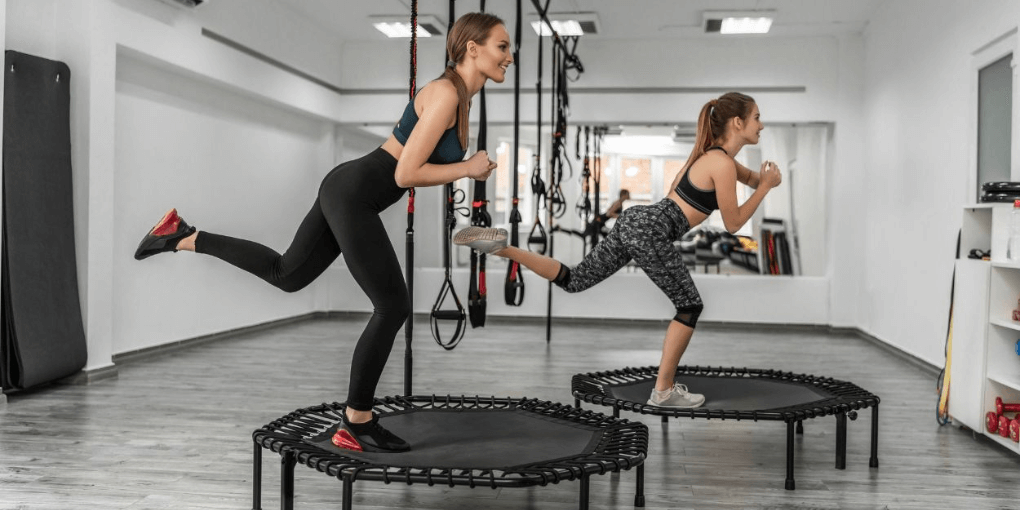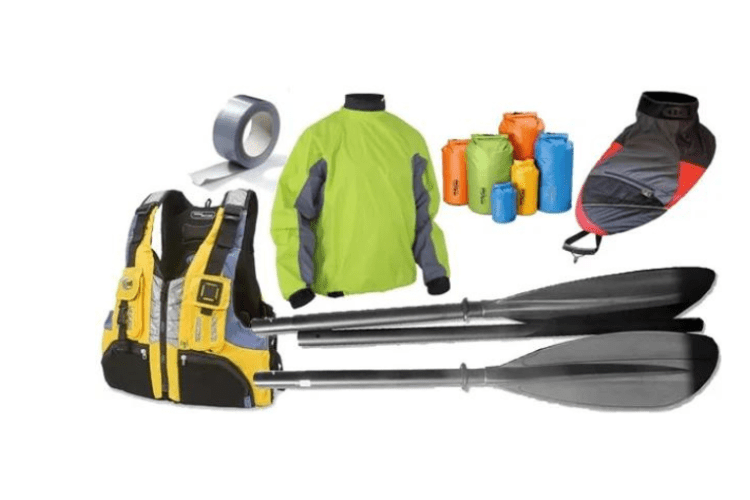Trampoline Training for Athletes: Improve your skill
“Trampoline was initially used by astronauts to help them regain bone density and muscle mass after spending time in zero gravity.”
What is trampoline training for athletes? Training helps athletes get better at sports. It improves their agility, balance, coordination, and overall athleticism.
What will I talk about? This blog will explore how training on a trampoline can make athletes better at their sports.

I’ll show you how it improves agility, balance, and coordination, and how it can enhance overall athleticism.
Using real-life examples and practical tips, I’ll demonstrate how training can help athletes improve their skills and perform better in sports.
Understanding The Training
Training on a trampoline is a fun and useful way for athletes to get better at their sports while staying safe and healthy.
Definition of Trampoline Training
This involves exercising and practicing on a trampoline. A trampoline is like a big bouncy surface made of strong fabric stretched over a frame with springs.
Instead of doing regular exercises on solid ground, you do them on this bouncy surface.
Brief History of Trampolines
Trampolines have been around for a long time, but the modern ones we see today were invented in the 1930s.
At first, they were just for fun and entertainment, like in circuses. But then, people started using them for sports too.
Trampoline gymnastics even became an official Olympic sport in 2000!
Overview of the Benefits
There are lots of good things about training on a trampoline:
- Gets you Fit: It helps you get fitter by making your heart beat faster and your muscles stronger.
- Makes you Strong and Quick: Bouncing on a trampoline makes your muscles work hard, especially your legs and stomach muscles. This makes you stronger and quicker.
- Improves Balance and Coordination: You have to balance yourself carefully on a trampoline, so it helps you get better at balancing and moving smoothly.
- Easy on your Body: Trampolines are softer than the ground, so it’s easier on your joints. You’re less likely to get hurt compared to running or jumping on hard surfaces.
- Helps with Tricks: If you’re into sports where you do cool tricks in the air, like gymnastics or snowboarding, training helps you learn those tricks better.
- Helps you Recover: If you’re coming back from an injury, training on a trampoline can help you get better without putting too much strain on your injured body parts.
The Science Behind Trampoline Training
Studies have shown that training is not only enjoyable. It’s also an effective method for athletes to enhance their skills by improving their movement and balance.
How training improves agility, balance, and coordination
When you bounce on a trampoline, your body has to move quickly to stay balanced and in control.
This helps you get better at changing directions fast (agility), staying steady (balance), and moving your body smoothly (coordination).
Biomechanics involved in trampoline exercises
Bouncing on a trampoline works because of its bouncy surface and the way your body reacts to it:
Bounce Back: The trampoline’s springs and fabric help you bounce up. This helps make your muscles stronger.
Body Awareness: Bouncing on the trampoline makes you more aware of how your body moves in space. This helps improve your balance and control.
Muscle Work: Bouncing on the trampoline makes lots of muscles work together. This makes them stronger and helps you move better.
Effectiveness of training for athletes
Studies have shown that bouncing on a trampoline can really help athletes:
- One study found that soccer players who trained on trampolines got better at moving quickly and staying balanced.
- Another study showed that college athletes who used trampolines improved their balance and control.
- Elite gymnasts also got better at moving and controlling their bodies after training.
Benefits of Trampoline Training for Athletes
Training on a trampoline is like a fun workout. Training also improves how you coordinate your movements. This is crucial for athletes in various sports.
Improved agility
Agility means being able to move quickly and easily. On a trampoline, exercises like jumping jacks (where you jump and spread your legs and arms out), twist jumps (where you jump and twist your body in the air), and side-to-side jumps (where you jump from side to side) help you get better at changing directions fast.
These exercises make your muscles stronger and help you move more smoothly and quickly.
Enhanced balance
Balance means being able to stay steady and not fall over. Trampolines are wobbly, so when you jump on them, your body has to work hard to stay balanced.
This makes your muscles stronger and teaches your body how to stay steady, even on a bouncy surface.
It’s like practicing standing on one leg – it helps you get better at staying upright.
Superior coordination
Coordination means being able to move different parts of your body together smoothly.
On a trampoline, you have to time your jumps just right and make precise movements to stay balanced.
This helps improve your hand-eye coordination. You’re watching where you’re jumping and coordinating your movements with what you see.
It also helps you understand where your body is in space, so you can adjust your movements to stay on the trampoline without falling off.
Trampoline into Athletic Workouts
Adding trampoline exercises to your workouts, you can become a better athlete while having a blast bouncing around. Just remember to be safe and have fun.
Types of trampoline exercises suitable for athletes
Trampoline exercises for athletes include jumping in different ways, like bringing your knees up or spreading your legs out. You can also try spinning or flipping.
These exercises help you move better and get stronger while having fun bouncing.
Sample trampoline workout routines for different sports
Soccer: Start with light jogging and stretching, then do exercises like jumping on one leg or side-to-side jumps. For basketball, try jumping high to pretend you’re dunking a ball. After, cool down with more stretching.
Basketball: Warm up by jumping around and stretching your arms and legs. Then, practice pretend shots and jumps like you would in a game. Finally, relax with gentle stretches.
Gymnastics: Begin with gentle stretches to warm up your body. Then, practice flips and twists on the trampoline. Finish by stretching again to keep your muscles flexible.
Tips for safely integrating trampoline training
- Start easy and slowly do more as you get better.
- Always jump with good posture to avoid hurting yourself.
- Have someone watch you, especially if you’re trying new moves.
- Take breaks and rest so you don’t get too tired.
- Try different exercises besides trampoline jumping to stay fit.
- Make sure the trampoline is in good shape and on a flat surface.
- Stop if anything hurts and listen to your body.
Training Equipment and Safety Precautions
Following these steps and using the right equipment, training can be fun and safe for everyone.
Overview of trampoline equipment
Trampoline training needs the right equipment to be safe and effective. This includes the trampoline itself and special nets to keep you from falling off.
There’s also padding for protection and sometimes extra stuff like handlebars or stretchy bands for extra exercises.
Importance of proper safety measures
Safety is super important when using trampolines. We need to use safety nets, padding, and follow rules for safe jumping to avoid getting hurt.
It’s also crucial to have someone watching us, warm up before jumping, and cool down afterward to stay safe.
Guidelines for selecting a suitable trampoline
When picking a trampoline, we should choose one that’s strong and has safety features like nets and padding.
We should put the trampoline on flat ground, away from things we could bump into.
Setting it up right and checking it regularly for any problems is key to staying safe.
We should always have rules for using the trampoline and make sure someone is watching us.
Training Resources and Programs
Explore online tutorials, fitness center programs, and expert instructors to elevate your skills. Find valuable resources to enhance your trampoline journey and achieve your training goals
Online tutorials and guides
You can learn trampoline skills from videos and guides online. Websites like YouTube have lots of helpful tutorials.
Just make sure to watch from reliable sources that explain things clearly. This way, you can learn new tricks safely and at your own pace.
Fitness center programs
Many gyms and sports places offer trampoline classes. These classes have instructors who teach you different exercises and help you get better. It’s like having a coach to guide you.
Check nearby places to see if they have trampoline classes available. It’s a great way to learn while being in a safe and supportive environment.
Finding qualified instructors
When looking for a trampoline coach, it’s important to find someone who knows what they’re doing.
Ask friends or family for recommendations or search for coaches certified by well-known organizations.
Make sure the instructor understands your goals and can explain things clearly before you start training with them.
Tips for Maximizing the Benefits
Learn how consistency, cross-training, and lifestyle factors can elevate your performance and maximize the benefits of your workouts.
Consistency and progression
Keep practicing on the trampoline regularly, and try to do a little more each time. As you get better, you can try more challenging exercises. This helps you improve safely and reach your fitness goals.
Cross-training strategies
Mix up your workouts by doing other types of exercises, like lifting weights, stretching, or going for a run. This helps make your body stronger overall and reduces the chance of getting hurt from doing the same thing over and over.
Lifestyle factors
Get enough sleep, drink plenty of water, and eat healthy foods to help your body recover after workouts. Sleep helps your muscles grow, water keeps you hydrated, and good food gives you energy to keep going. Taking care of yourself outside of workouts is just as important as what you do during them.
Conclusion
Trampoline training is really good for athletes. It helps them become more agile, balanced, coordinated, and overall better at sports. It’s a fun way for athletes to get better at what they do.
Athletes should think about adding training to their workouts. It’s like adding a new tool to their toolbox.
Doing trampoline exercises, athletes can mix things up, get stronger, and be better prepared for their sports.
Training on trampoline has a lot of potential for athletes. If they stick with it, work hard, and get help when they need it, they can really improve their skills and do great things in their sports. It’s all about dedication and having the right support.
FAQs
Trampoline training helps athletes improve agility, balance, coordination, and athleticism, enhancing their skills for various sports.
It's like a special workout on a bouncy surface that makes them better at what they do.
Athletes should consider it because it adds something new to their workouts.
It makes their muscles stronger and helps them do better in sports. It's like having an extra tool in their toolbox to help them succeed.
It is really good for athletes because it helps them move better. It makes them quicker, steadier, and better at controlling their bodies.
It's gentle on their joints and helps them get better if they're coming back from an injury.
Athletes can do lots of different exercises on a trampoline. They can do things like jumping jacks, where they jump and spread their legs and arms out, or twist jumps, where they jump and twist their bodies in the air.
These exercises make them better at moving quickly and staying steady.


